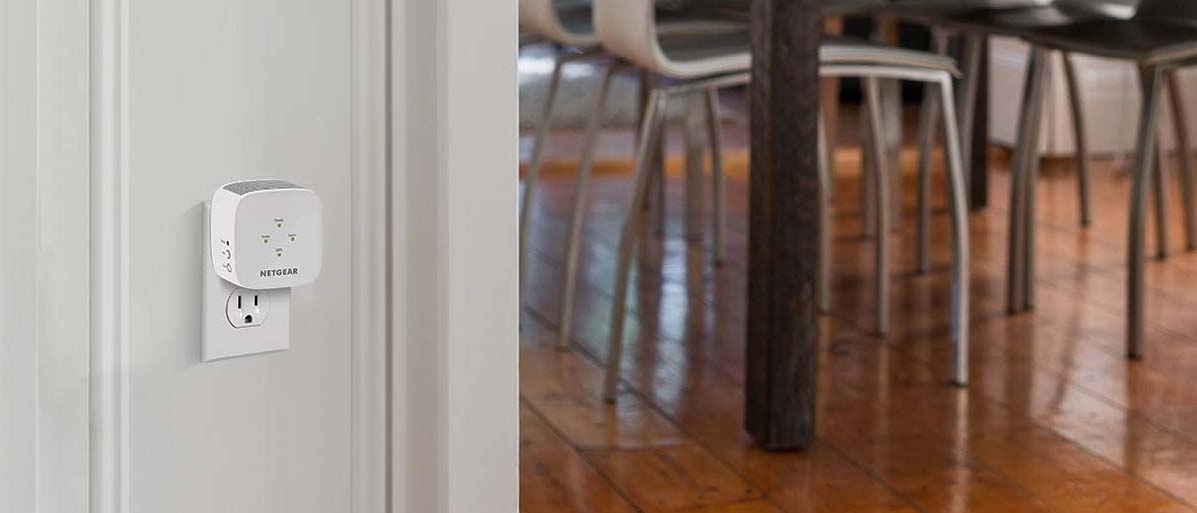Tom's Guide Verdict
Inexpensive and economical to use, at $40 Netgear’s EX2800 is one of the best Wi-Fi buys today. It may not be the fastest extender around but it does a good job of filling Wi-Fi dead zones without costing an arm and a leg.
Pros
- +
Small
- +
Easy set up process
- +
2FA and Touch ID security
- +
Inexpensive and economical to use
Cons
- -
802.11ac only
- -
No Ethernet port
- -
No setup app
Why you can trust Tom's Guide
Wi-Fi Rating: AC750
Size: 2.8 x 2.8 x 1.8 inches
Number of Antennas/Removable: 2 internal/No
Wi-Fi Specs: 802.11ac dual band
Ports: None
Performance at 15 feet: 170.9Mbps
Extender Range: 90 feet
Est. Annual Costs: $1.10
Netgear’s WiFi Range Extender EX2800 may be one of the simplest Wi-Fi extenders to set up and use, but it can help fill your home with data for just $40.
While it doesn't offer an Ethernet port for additional wired access, this inexpensive range extender has excellent security, and features the ability to use two-factor authentication and Apple’s Touch ID.
Netgear WiFi Range Extender EX2800 review: Design
Netgear’s EX2800 plugs right into an AC outlet, but at 2.7 x 2.7 x 1.8 inches, it won’t block an adjacent outlet. It has a two-prong plug, but lacks adjustable antennas to bring in the strongest signal.
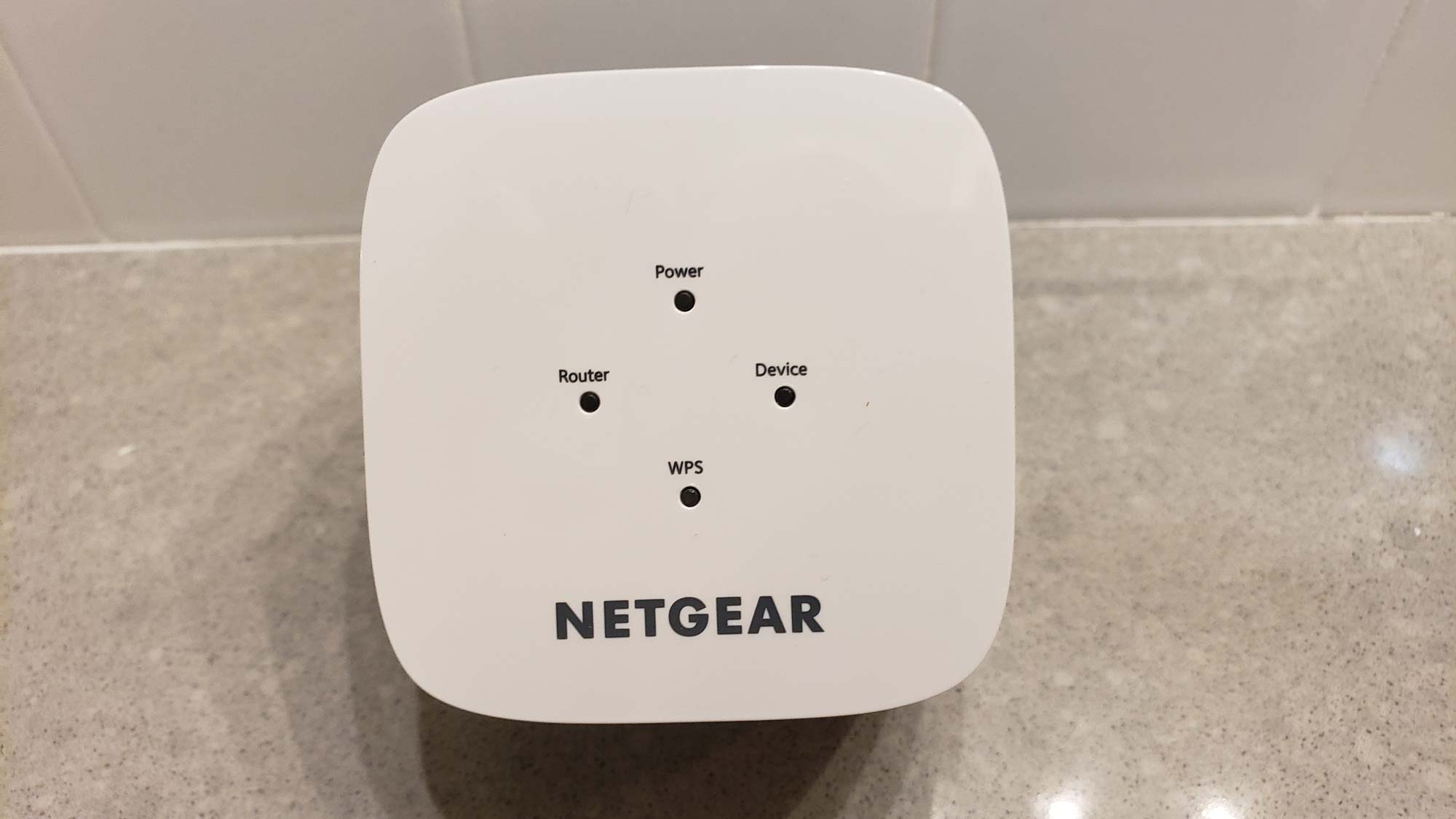
Its design, however, does without an Ethernet port, so the EX2800 can’t be used as a wired access point. There are four LEDS up front for Power, Router, WPS and Device, which acts like a crude signal strength meter to help with optimal placement. They glow green when everything is OK but there’s no way to turn them off.
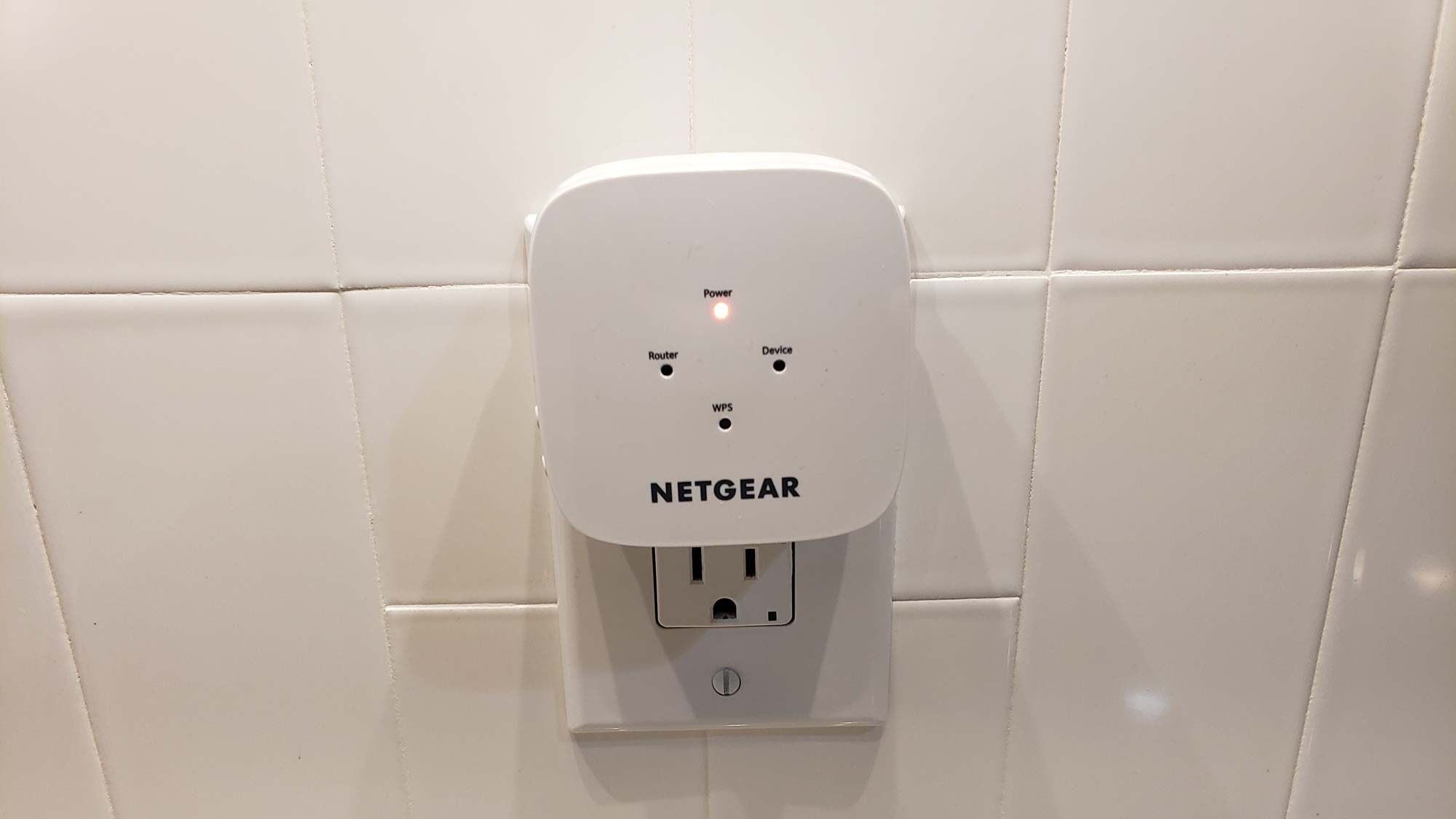
The extender’s top and bottom have cooling holes. Its side has a reset button for and there are WPS and Power buttons.
Netgear WiFi Range Extender EX2800 review: Performance
The Netgear EX2800 extender works by wirelessly connecting to the host router and retransmitting stronger 2.4- and 5GHz signals. It uses WiFi-5 technology and under ideal conditions it is theoretically capable of moving up to 750Mbps.
Based on testing with a TP-Link Archer C5400X and Ixia’s IxChariot networking performance benchmark, the EX2800 does a lot with a little but was left in the digital dust by Wi-Fi 6-rated Netgear AX1800 Mesh Extender (EAX20), however. With a 90-foot range, the EX2800 moved 170.9Mbps to our receiving system 15-feet away. This is just slightly below what we saw in the Rock Space AC1200 WiFi Extender review (175.4Mbps) at the same distance. Both were blown away by the Netgear EAX20’s 375.4Mbps.
When the EX2800 was set up on the same floor 40-feet from the router and the test system another 50-feet away, it delivered 24.4Mbps, half that of the Rock Space Wi-Fi Range Extender and one-fifth that of the Netgear EAX20. It did better when the extender was placed a floor above the router and the test machine 40-feet away. It delivered 124.4Mbps versus 173.1Mbps for its Wi-Fi 6 cousin the EAX20.
During my week using the EX2800, it used an amazingly low 1-watt of power. If it’s left on 24/7, it will cost about $1.10 per year if you pay the average cost of electricity in US of 13 cents per kilowatt-hour. Clearly, it’s for misers with Wi-Fi dead zones.
Netgear WiFi Range Extender EX2800 review: Features
The EX2800 dual-band extender uses 802.11ac (Wi-Fi 5) technology to push both 2.4- and 5GHz networks into new parts of a home; it can’t combine them into a single network name, though. It has the power to fill an extra 1,200 square feet of a Wi-Fi home, according to Netgear.
There are extensive customization options available that range from backing up and restoring the extender’s settings to allowing a device to hog the extender’s entire throughput. Called Fast Lane, it’s easy to set up but it only works with a single band and might antagonize the family.
Netgear WiFi Range Extender EX2800 review: Setup and software
Forget about using an app to setup and configure the Netgear EX2800 because it requires an old-school connected browser and Netgear’s Genie software to install and make changes. Using my ThinkPad T470, I typed “mywifiext.net,” created a new account and picked that I wanted to use the EX2800 as a range extender.

Next, the software scanned for the device and found my networks. I picked the two networks I wanted to extend and entered their passwords.
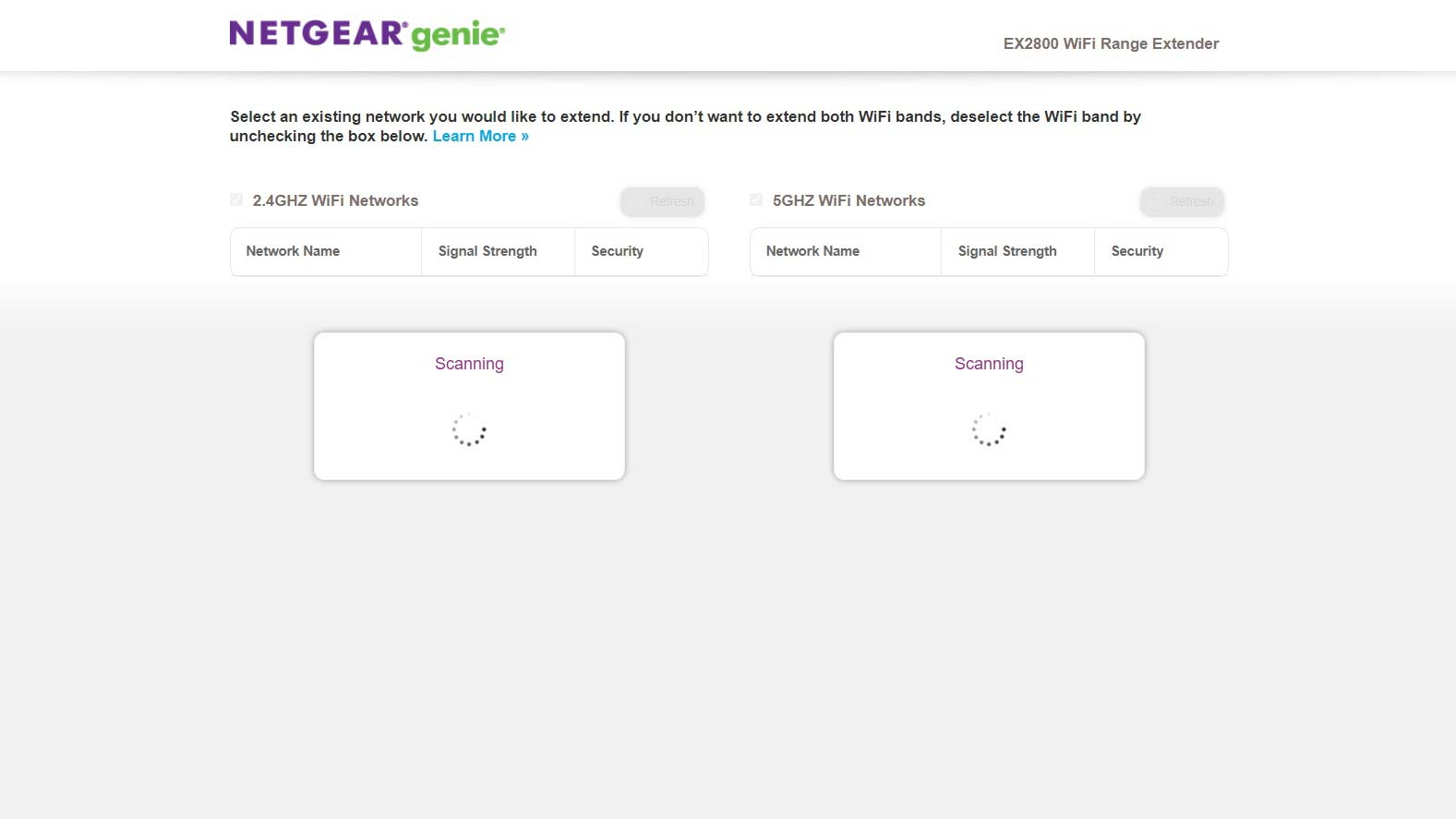
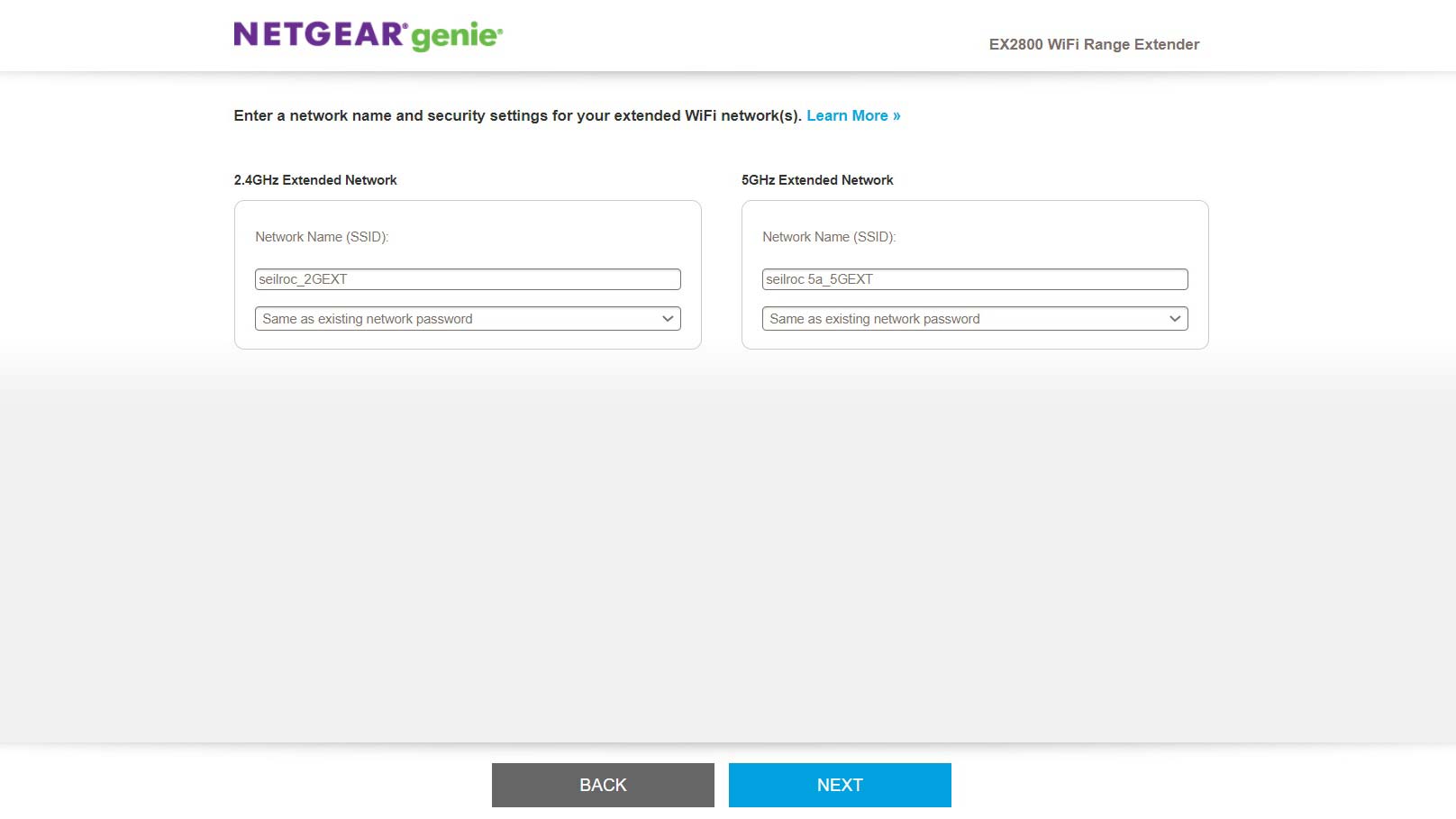
The software took a minute to set up the extension. Finally, I entered the names and passwords of the extended networks. Unfortunately, I wasn’t able to consolidate them into a single network name. Everything worked on the first try and the extension yielded 116Mbps out of my 200Mbps connection. With everything working fine, I moved the extension to a spot 50 feet away. Start to finish, it took 5 minutes.
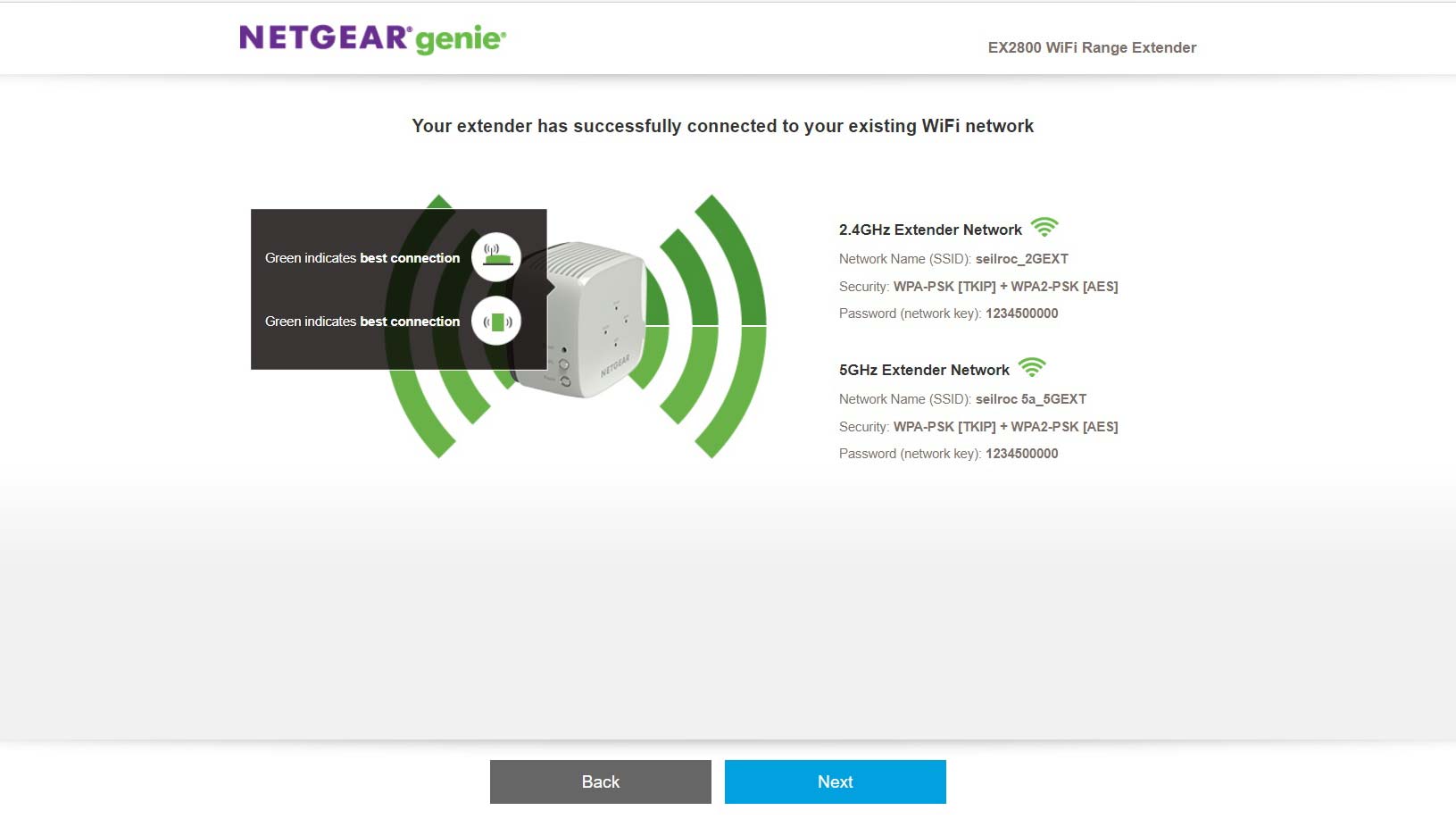
Netgear WiFi Range Extender EX2800 review: Warranty and support
Netgear backs the EX2800 with a one-year warranty but only 90-days of support. If you have problems later on, you’ll need to pay for additional customer support. Thankfully, Netgear’s site is chock full of DIY material to help get the most out of the extender, including help setting it up and enhancing its security. If you need assistance, the Netgear staff is standing by 24/7.
Netgear WiFi Range Extender EX2800 review: Verdict
The Netgear WiFi Range Extender EX2800 does the trick for those with lots of Wi-Fi dead zones by quickly and easily filling in gaps. At $40 it’s a good buy but lacks the features offered on something like TP-Link RE650 AC2600 Wi-Fi Range Extender, which boasts a wired Ethernet port for converting it into a wired access point and has superior performance. Still, it’s a small and inexpensive Wi-Fi extender that can help fill a home with data.
Brian Nadel is a freelance writer and editor who specializes in technology reporting and reviewing. He works out of the suburban New York City area and has covered topics from nuclear power plants and Wi-Fi routers to cars and tablets. The former editor-in-chief of Mobile Computing and Communications, Nadel is the recipient of the TransPacific Writing Award.
